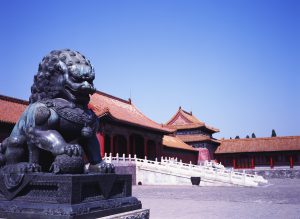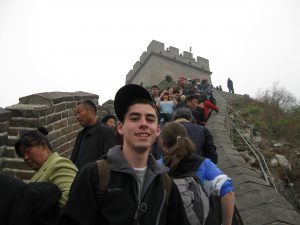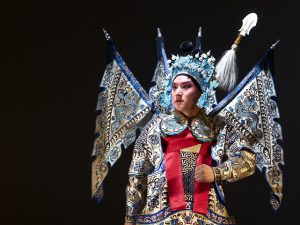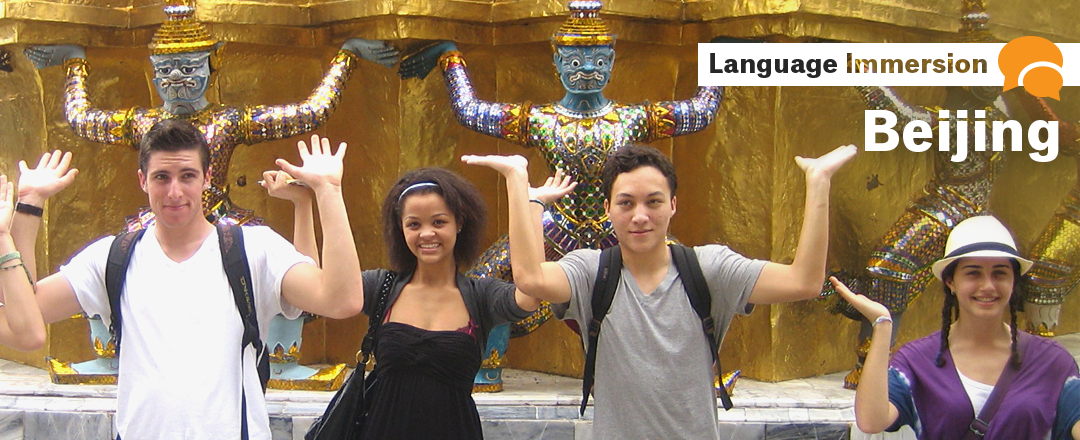Accelerate your students’ Chinese with an unforgettable trip to the Northern Capital. This 12-day tour is an incredible opportunity for your students to walk through the Forbidden City, take a march down the Great Wall, learn some Tai Chi, and much more—all while they become more fluent and confident in Chinese.
As part of our language immersion collection, this tour features a daily three-hour language course, with each class focusing on a different topic, like art or food. After your morning class, your students will apply their vocabulary with activities related to that topic.
It’s the perfect combination of fun, adventure and learning, and it’s never been easier to plan than with Explorica. Read on to learn more about Language Immersion: Beijing.
Language Immersion: Beijing (12 days)

Before starting your language course, begin the tour with a jam-packed guided walk through some of Beijing’s biggest sites. Visit the massive Tiananmen Square, the site of the famous Tiananmen Square protests of 1989.
Then, head over to the Forbidden City, the seat of the Chinese monarchy from 1420 to 1912, and Jingshan Park, the formerly private imperial garden. Visit the Summer Palace, a pearl factory, a local tea house, and more in this comprehensive look at Beijing’s most prominent attractions.
The next day, put a checkmark on your bucket list with a visit to the Great Wall. Built and rebuilt over the course of 2,000 years, the wall extends to over 5,000 miles of stone, wood, brick and mud. Marvel at one of the world’s premier travel attractions, take pictures, and get bragging rights for back home.

Chinese Art: Begin your first day of class by honing your art vocabulary. Then, apply what you’ve learned on an incredible day-long trek through China’s artistic treasures.
Tour traditional Chinese architecture and rub elbows with locals in a tour through Beijing’s hutongs, or narrow alleyways. Your students will be encouraged to speak Chinese with your local tour directors, and they’ll also have the opportunity to practice conversation when they have lunch with a local family.
Then, take an art class, where your students will learn the art of kite making, paper cutting, and face painting in Chinese. Finally, watch Peking opera actors apply their elaborate face paint before you sit back and enjoy the show!

Chinese History & Heritage: Start off the second day of class with an overview of Chinese vocabulary, with a focus on the country’s rich history and heritage. Then, put your students’ skills to work with visits to some of China’s historic sites.
Tour the Yonghe Lamasery—originally a Qing Dynasty Tibetan Buddhist temple, the Lamasery previously housed court eunuchs. It includes five main halls, the most famous of which is the Hall of Harmony and Peace, which houses three Buddhas, one each for the past, present, and future.
Take a walk over to the 14th-century Temple of Confucius, where you’ll find 198 stone tablets listing over 51,000 names of advanced scholars. An old cyprus tree outside is said to have the ability to distinguish between good and evil.
Head to the imperial college of Guozijian, and finish off the day with a lesson in traditional Chinese calligraphy. Throughout the day, your students will be tasked with conversing with their tour director in Chinese and learning calligraphy in the native language.

Daily Life in Beijing: What does day-to-day life in Beijing look like? Take your vocabulary lesson, and make your way to the Temple of Heaven, a 15th-century temple complex where locals can be found practicing Tai Chi, martial arts, and ballroom dancing. Try out Tai Chi for yourself with a lesson taught by a local instructor.
Then, visit a pearl market, where your students will get the chance to haggle for the best prices with Beijing’s shopkeepers, the perfect opportunity to pick up some souvenirs.
Chinese Culinary Traditions: Whet your appetite on your fourth day of class with a day of all things Chinese food. Review your Chinese food vocabulary in class, and then check out a local food market, where your students will get to interact with locals and check out the fare.
Then, students will take a cooking class using the food they bought, conversing in Chinese with their instructor. Of course, the day wouldn’t be complete without the opportunity to try your creations for yourselves.
Chinese Culture and Education: The education system may be different from what your students experience daily, but they’ll get to spend the morning learning vocabulary all about it.
Afterwards, your students will get to practice their speaking skills with local middle school children, and enjoy a game of ping pong. Declared the national sport by Chairman Mao in the 1950s, China dominates competitive ping pong at the world and Olympic level. See if any of your students can get one past the middle school students.
Once the course is over, use the rest of your time taking in the sites in China’s biggest city: Shanghai! Walk along the waterfront lined with colonial-era buildings, explore temples and palaces, see an exciting acrobatic troupe performance, and cruise down the river that cuts the downtown area in half.
View the full itinerary for Language Immersion: Beijing, and contact us to start planning.

